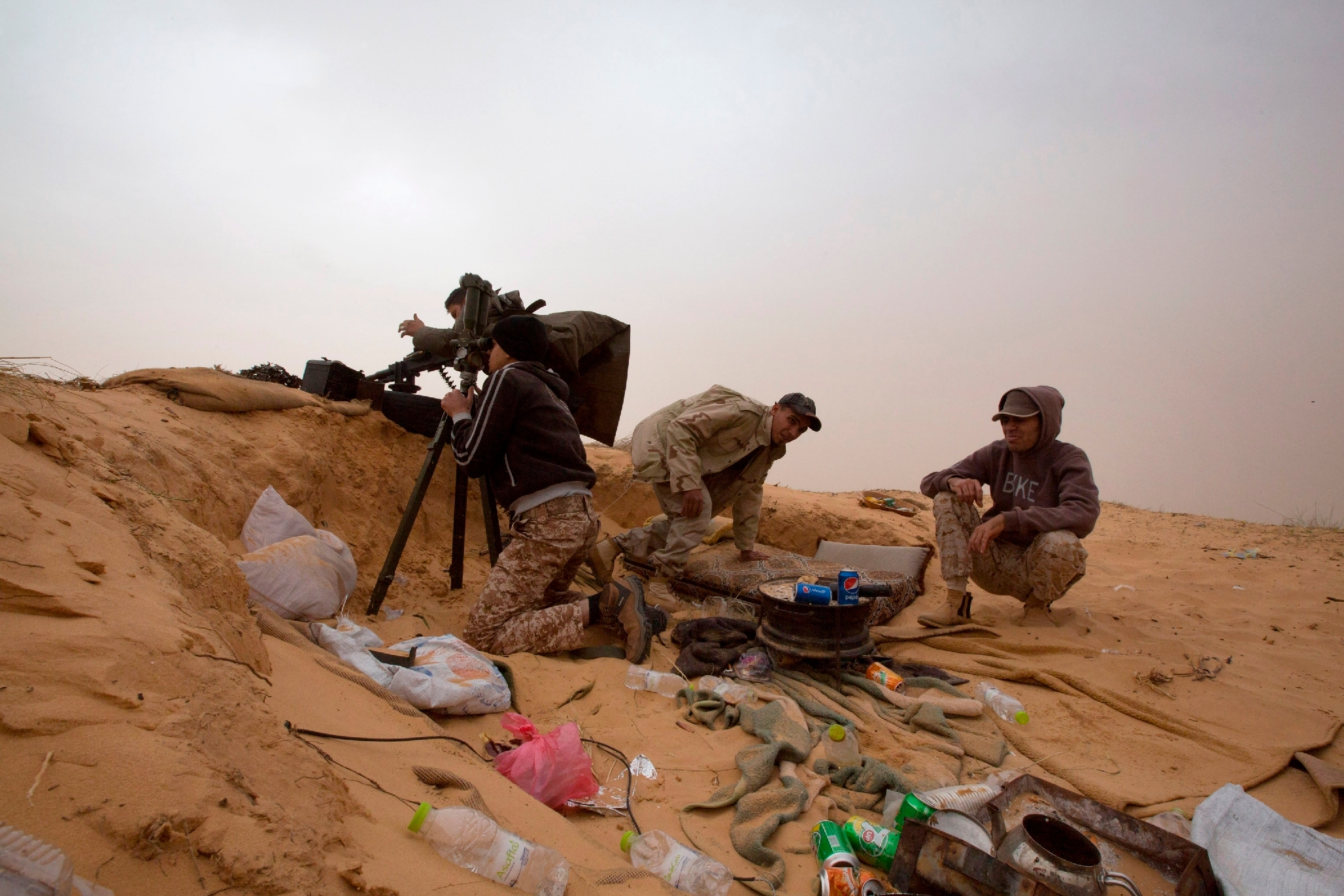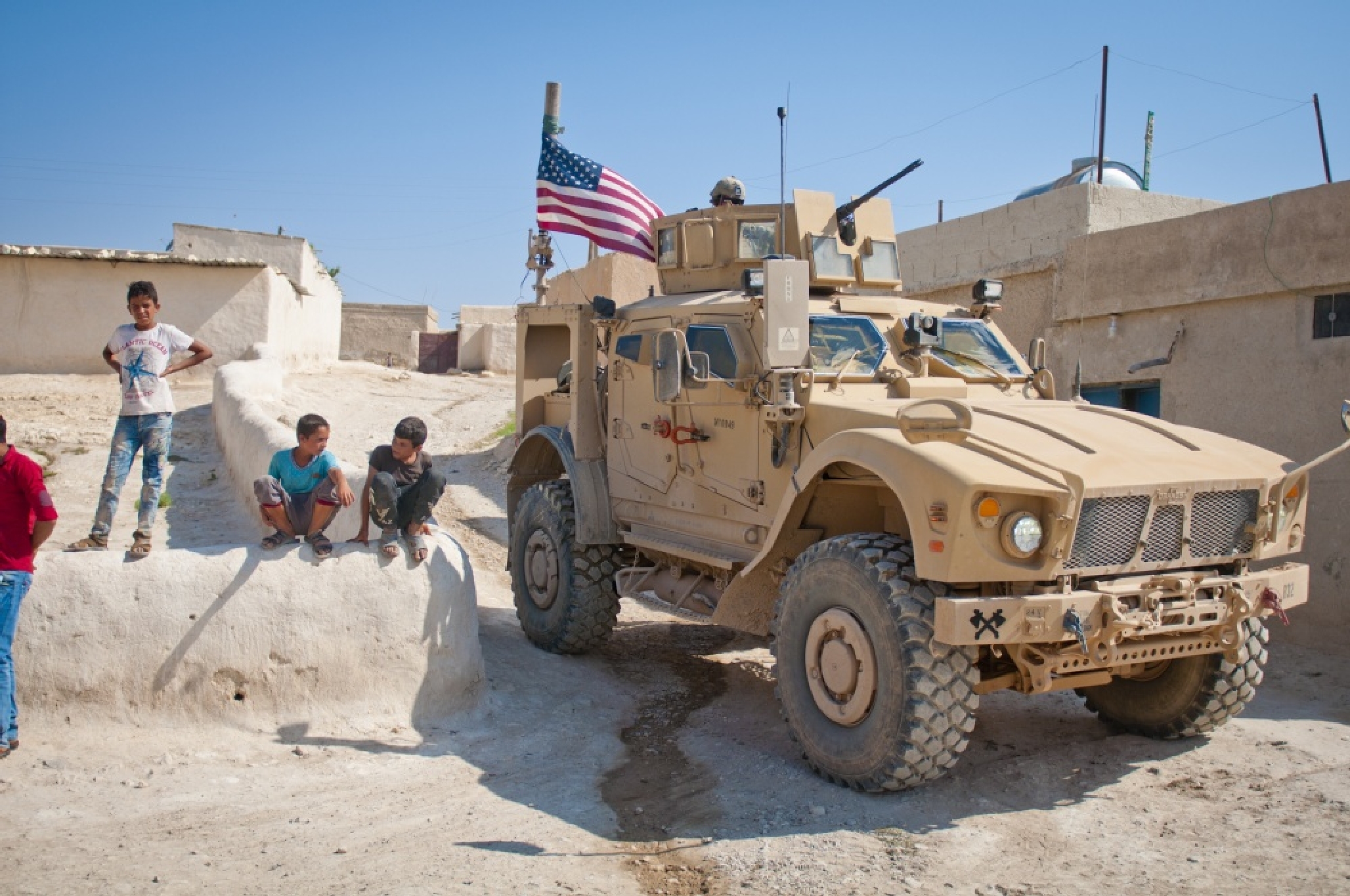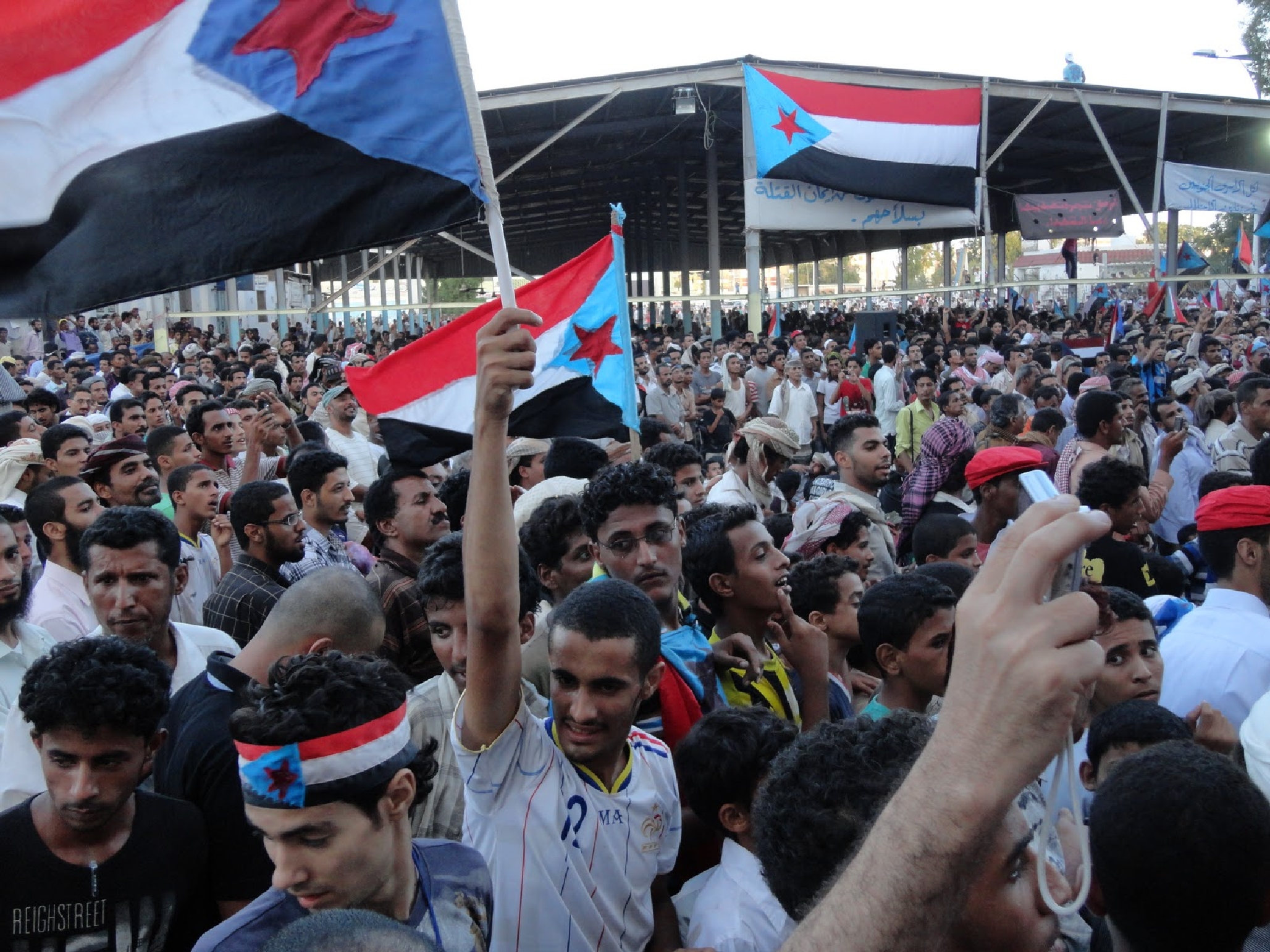Fall 2019
Breaking and Mending
– Ariel I. Ahram
Separatist ambitions bloomed in the Middle East after the Arab Spring. Why have they withered since those heady days?
Strolling amidst the rubble of an abandoned military post along the Syrian-Iraqi boundary in the summer of 2014, the fighters of the Islamic State had reason to boast. Where Iraq and Syria’s red, green, and black tricolors had flown side by side like fraternal twins, now the austere black banner of the caliphate stood alone. “This is the so-called border of Sykes-Picot,” proclaimed one fighter, referring to the secret Anglo-French agreement to divide up the Middle East during the First World War. “Praise God, we don’t recognize it and we will never recognize it. This is not the first border we will break. God willing, we will break all the borders.”
Reimagining the Arab world’s notoriously malformed international boundaries has become a political parlor game in certain circles. The Islamic State and its fellow pan-Islamists declared the region’s states too small, devised by foreigners to undercut the region’s unity and strength. Others, including many Western onlookers, as well as stateless nations like the Kurds, saw the problem as regional states that were too big, encapsulating an unworkable ethnosectarian mosaic.
The 2011 uprisings in the region – and the tumult that followed them – has provided a chance to enact these competing visions for territorial redesign. The Islamic State was the most fearsome and infamous example, but actors across the region took the opportunities of state failure to build new political entities.
In Iraq, Kurdish forces went on the political and military offensive that challenged Iraq’s territorial integrity. The Syrian Kurdish leaders of the Democratic Union Party (PYD) embarked on ambitious project to fashion Rojava (Western Kurdistan), later renamed the Autonomous Administration of North and East Syria (AANES). Tribal and political leaders in eastern Libya set up institutions for Cyrenaica’s self-rule, rejecting the internationally recognized government in Tripoli. And partisans of the southern resistance pushed Yemen to the brink of fragmentation, even as they made tactical alliances with the beleaguered central government to fight the Houthis in the north.
.jpg)
Yet despite the separatists’ best efforts in nearly a decade of war, the territorial map of the Arab world remains unchanged. Major setbacks have beset each of these movements, including the territorial defeat of ISIS and the death of its leader, Abu Bakr al-Baghdadi, and the sudden U.S. withdrawal of military support to Kurdish factions in northeastern Syria.
But these reverses have not rendered separatist challenges moot. As plans for regional conflict resolution take shape, separatists will play a major role in defining – and often frustrating – the chance for peace in the Middle East. They may even be primed to win the sorts of uneasy autonomy within central states that other separatist movements in Africa, Europe and the Mediterranean have won.
Where Separatism Comes From
Given the Middle East’s ethnic fractiousness, many assume that separatism is a constant and ubiquitous challenge. Through much of the region’s modern history, however, the thrust of political competition was centripetal, aimed at gaining control in the center, and not with breaking away.
The initial protests in 2011 were no exception. Demonstrators in Egypt, Tunisia, Bahrain, Yemen, Libya, Syria, Jordan, Morocco, and elsewhere draped themselves in national flags. As they chanted the now famous slogan, “the people demand the downfall of the regime,” they claimed to speak on behalf of the entire polity, not a narrow faction.
My book, Break All the Borders: Separatism and the Reshaping of the Arab World, explores how and why separatist movements in the periphery gained momentum in the midst of these national uprisings. Contrary to predictions that upriings would shatter many existing states and lead to utter chaos in the region, separatist movements appeared in only a handful of contries.
Violent convulsions for the Middle East’s separatist movements obscure what they share in common: They are the orphans of Wilsonian ideals.
Separatist movements in Syrian and Iraqi Kurdistan, southern Yemen, eastern Libya, and the Islamic State, each trace their inspiration to Woodrow Wilson’s promises of self-determination at the end of the First World War. As multinational empires collapsed in 1918, nationalist leaders across the world tried to seize the chance to build institutions of statehood on the ground and appeal for support from abroad. This Wilsonian moment, as historian Erez Manela called it, set a pattern that would repeat with the breakdown of the British, French, and Italian empires after the Second World War, and again with the disintegration of the Soviet Union in the 1990s.
Yet these periods of instability and opportunity ended with far fewer recognized states than national communities that demanded independence. And separatists in the Middle East and elsewhere still nurture memories of their nations’ lost political and territorial autonomy, often in idealized and exaggerated terms. They seek to reinstate the sovereignty that was unjustly interrupted, carrying forward the legacies of missing or dead states like the Kingdom of Kurdistan, Emirate of Cyrenaica, People’s Democratic Republic of Yemen, and the Ottoman Empire itself.
Separatists espoused different long-term goals from rebel groups bent on overthrowing the central government in situ. But they labored to accomplish similar objectives: replace the state and offer alternative modes of governance. They set up security services and court systems. They seized oil installations and irrigation networks. They ran schools, oversaw agricultural cooperatives, and collected taxes. Some even held elections. Rebel rule was messy and sometimes ugly, but it often proved “good enough” to protect civilians in the midst of brutal war – and was equal to, if not better than, what incumbent regimes offered.
.jpg)
The post-2011 separatists also engaged international actors in negative and positive ways. The Islamic State, as the black sheep in the separatist fold, was remarkable in its defiance of international norms. Its founders believe that the legitimacy of the self-proclaimed caliphate stemmed not from the United Nations or other organizations of global governance, but directly from the Islamic community itself. In this respect, the Islamic State claimed to be commander of the faithful for the entire Muslim world, just as the last Ottoman caliph had until 1924. The Islamic State threatened not just Syria and Iraq, but also the entire global order. The international response to that threat was resounding. Iraqi, Syria, Iranian, Lebanese, Kurdish, Saudi, Emirati, Jordanian, Russian, Turkish, American, and European forces (among others) acted as part of a massive ad hoc alliance that steadily degraded the Islamic State. By late 2017 the Islamic State as an effective territory-controlling entity was gone.
Reverses have not rendered separatist challenges moot. As plans for regional conflict resolution take shape, separatists will play a major role in defining – and often frustrating – the chance for peace in the Middle East.
Other separatists in the region were more solicitous toward foreign patrons. Touting themselves as bulwarks of regional security, many of these movements came to serve as proxies in the larger regional and global campaigns which have unfolded after 2011.
The Kurdistan Regional Government (KRG) in Iraq, for instance, is often counted among the most reliable U.S. ally in the Middle East. Indeed, KRG forces were a major component in the campaign to retake Mosul and other Islamic State-held cities in northern Iraq. The KRG also cultivated relationships with Tehran, Ankara, and, Moscow.
Kurdish factions in Syria initially declared their loyalty to Damascus, but used the occasion of state breakdown and retreat from north and northeastern Syria to launch their autonomous region unilaterally. By 2012, however, Syrian Kurdish forces were in direct military confrontation with the Islamic State. These same Kurdish factions became the core of the US-backed Syrian Democratic Forces (SDF) in 2015, which played a key role in conquering the Islamic State capital of Raqqa.

Libya’s eastern separatists aligned with the Tobruk-based House of Representatives (HoR) government and provided military backing to renegade General Khalifa Haftar – a close ally of Saudi Arabia, the Emirates, and Egypt. Separatists joined the fight against the Islamic State, al-Qaeda, and Muslim Brotherhood-associated groups in eastern Libya. And in Yemen, Emirati support has helped the Southern Transitional Council (STC) emerge as the leading separatist organization, drawing in militia fighters from Salafi groups, tribes, and military factions in and around Aden. The STC and other separatists were crucial in the fight against the northern Houthi alliance, as well as against al-Qaeda and other radical groups that infiltrated the south.
External support and internal mobilization enabled Middle East separatists’ gains against incumbent states. International opprobrium, in contrast, helped to doom the Islamic State.
Woodrow Wilson’s Orphans
Whatever tactical advantages separatists offer in regional conflicts, the international community treats the possibility of secession and the breaking of borders warily. In part, this reflects an inherent contradiction in the Wilsonian ideals espoused by these separatist movements. The Wilsonian notion that national communities deserve the right to self-rule and self-determination is balanced against an international legal system that supports the continuity of member states. Borders are fixed to avert the presumed pandemonium of separatist rebellions and irredentist invasions and annexation. The UN, like Wilson’s brainchild, the League of Nations before it, routinely affirms territorial integrity as a cornerstone of global order.
Regional politics come into play as well. States such as Turkey and Iran harbor specific geopolitical objections to Kurdish independence, even as they parlay with the KRG on other fronts. The swift trajectory of South Sudan, Kosovo, and East Timor from triumphant independence to troubled statehood has made states such as the U.S. leery of secession.
Indeed, state-building is now the watchword for ending the Middle East’s civil wars. Mediation efforts aim to enable central governments, reinvigorate state sovereignty, and restore central control over peripheral and border regions. Power-sharing arrangements help entice former belligerents into the fold of the state. Newly bolstered central governments can defeat non-state actors and eliminate “ungoverned space.”
This approach places central governments and separatists on an inevitable collision course. For example, the hopes for eventual Kurdish statehood have steadily diminished in the last two years across two states – despite the Kurds’ military successes and seemingly solid alliances with the United States.
The position of Syria’s Kurds was precarious even before the withdrawal of U.S. military advisors in October. The Assad regime, which steadily and brutally regained control in western parts of the country with Russian and Iranian help, evinced no sympathy for AANES’s self-styled autonomy. Ankara has long regarded the PYD as a stalking horse for PKK terrorists, and repeatedly attacked AANES strongholds. Only a small U.S. detachment deployed within the region was enough to deter either Ankara or Damascus from encroaching.

As President Donald J. Trump publicly questioned protecting the Unites States’ Kurdish allies in Syria, the writing was on the wall. In late 2018, when the President first broached and then retracted withdrawal plans, the PYD turned to Russia and the Assad regime itself in hopes to find another protector. With the U.S. withdrawal confirmed in October 2019, Turkey renewed its onslaught, and Syrian government forces returned to northeast Syria to defend its sovereignty from both the separatists and Turkey. (A number of Islamic State detainees escaped in the melee.) Even the assassination of Islamic State caliph Abu Bakr Baghdadi, and indications of U.S. intentions to keep a small force to secure Syrian oil fields does not change the Syrian Kurds’ geostrategic calculations, or cushion the blow to their separatist ambitions.
International influence also played a role in downturns for Kurds in Iraq. Fresh from its military success against the Islamic State in Mosul in 2017, KRG President Massoud Barzani’s call for an independence referendum set off a regional crisis. Besides the obvious objections from Iraq’s central government in Baghdad, all of the KRG’s main international allies, including Turkey, Iran, and the US, warned against the move. The referendum’s strong (but at times, uneven) support for secession did not further the KRG’s aims. Turkey and Iran imposed a blockade on the Kurdistan Region. Iraqi security services, including Shi’i militias, marched on Kirkuk, which the KRG claimed as its long-lost capital. Kurdish leadership fractured, and its forces had to withdraw from Kirkuk in defeat. Civil war was narrowly averted, but tensions within Kurdistan remain high and relations between the KRG and Baghdad unresolved.
The swift trajectory of South Sudan, Kosovo, and East Timor from triumphant independence to troubled statehood has made states such as the U.S. leery of secession.
In Libya, the internationally sanctioned negotiations between the central government in Tripoli and the rival government in the east have largely ignored the federalist faction that remains active in the eastern HoR legislature. For the time being, Khalifa Haftar appears to have outmaneuvered his federalist allies, exhausting their militias in the frontlines of Benghazi and then displacing them with his own loyalists. Nevertheless, pro-separatist sentiments remain strong in oil-rich Benghazi and the Green Mountains. Nationwide conciliation or constitutional reforms in Libya will have to reckon with demands for eastern autonomy, if not outright secession.
Yet nowhere is the separatist issue and its relation to the international order more explosive than Yemen. As Iranian-backed Houthis seized control of Sanaa and the far north of the country in 2014, the STC made a tactical alliance with the internationally-recognized government of Abdrabbah Mansur al-Hadi as it relocated to Aden. This relationship was always fraught, however. With direct support from the Emirates, the STC proceeded to set itself up as a state-within-a-state. Its power grew as the nominal central government proved hapless. Pro-independence demonstrations, prominently featuring the old South Yemeni flag, paralyzed Aden after Hadi accused STC leaders of violating Yemen’s sovereignty and tried to remove them as governors and ministers in 2017. STC leaders formally issued a declaration of independence, brazenly defying the central government as it seized ports and other vital installations around Aden.

Still, the fighting in northern Yemen for a long time overshadowed the southern issue. The STC disavowed the UN-backed backed truce between the central government and the Houthis in late 2018, reiterating their secession demands. The rift between separatists and the central government also drove a wedge between the Emirates and Saudi Arabia, once close allies in the campaign against Iran and the Houthis. Hadi, himself a son of the south, reached out to leaders who favored federal decentralization instead of independence as part of a divide-and-rule strategy. Just this week, Riyadh brokered a truce between Hadi and the STC, assuring an even split in power between northerners and southerners, and effectively elevating the separatists on the international stage. These efforts, though, complicate negotiations with the Houthis and do little to address the continued pressure of terrorists groups like al-Qaeda in the Arabian Peninsula.
These violent convulsions for the Middle East’s separatist movements obscure what they share in common: They are the orphans of Wilsonian ideals. They adopted the vocabulary of self-determination to make their claims for independence and statehood. They launched institutions to demonstrate their capacity and worthiness for self-rule. And geopolitics eventually stymied most of their gains.
A Future for Separatism
State building is rife with uncertainties, contradictions, and violence. Even before the 2011 uprisings, many Middle Eastern states were functionally moribund – if not outright murderous – toward their citizens. The UNDP’s Arab Human Development report issued in 2009 described incumbent states as “a menace to human security, rather than its chief supporter.” Even reconstruction initiatives begun in Syria and Iraq exacerbated political and economic inequalities, rendering them a peace of the victors.
Separatism stands athwart these state-building efforts. Even as prospects for breaking borders in the Middle East dim, separatists retain a potent veto. Blocked from obtaining sovereignty, they can still thwart any return to the pre-war status quo.
As plans for regional conflict resolution take shape, separatists will play a major role in defining – and often frustrating – the chance for peace in the Middle East.
The odds never favor separatists, but their hold on power on the ground demonstrates that alternative configurations of population, territory, and borders are possible. And such aspirations remain, even if neutralized in a military sense. They build upon the legacies of lost autonomy and sow the seeds for future separatist challengers.
A more peaceful future in the Middle East might come from finding a middle path between breaking borders and rebuilding them. Civil wars in Somalia, Cyprus, Bosnia, Azerbaijan, and Georgia ended with separatists controlling significant territories and populations. These de facto states have real political boundaries and infrastructure, and lack only formal international recognition. The choice by incumbent states and the international community to accept them plays a critical role in tamping down violence, and even offers a rough-and-ready federalism and functional power-sharing.
Such middle paths require ingenuity and flexibility in governance beyond the dogmas of state-building to work. The ambitions of both incumbent states and separatists must be sacrificed. And success is assured not by law, but through practical politics and aversion to costly and interminable war. Perhaps this trend to “freeze” such conflicts is a model for the Middle East as well, and preferable to the bloodshed and breakage of outright separatism.
Ariel I. Ahram is an associate professor in the Virginia Tech School of Public and International Affairs in Arlington. He was a fellow at the Wilson Center in 2017. Ahram is the author of Break All the Borders: Separatism and the Reshaping of the Arab World (Oxford University Press) and the forthcoming War and Conflict in the Middle East and North Africa (Polity).
Cover: An Islamic State militant flag lies in a tent encampment after U.S.-backed Syrian Democratic Forces (SDF) fighters took control of Baghouz, Syria in March 2019. (AP Photo/Maya Alleruzzo)
.jpg&w=3840&q=75)